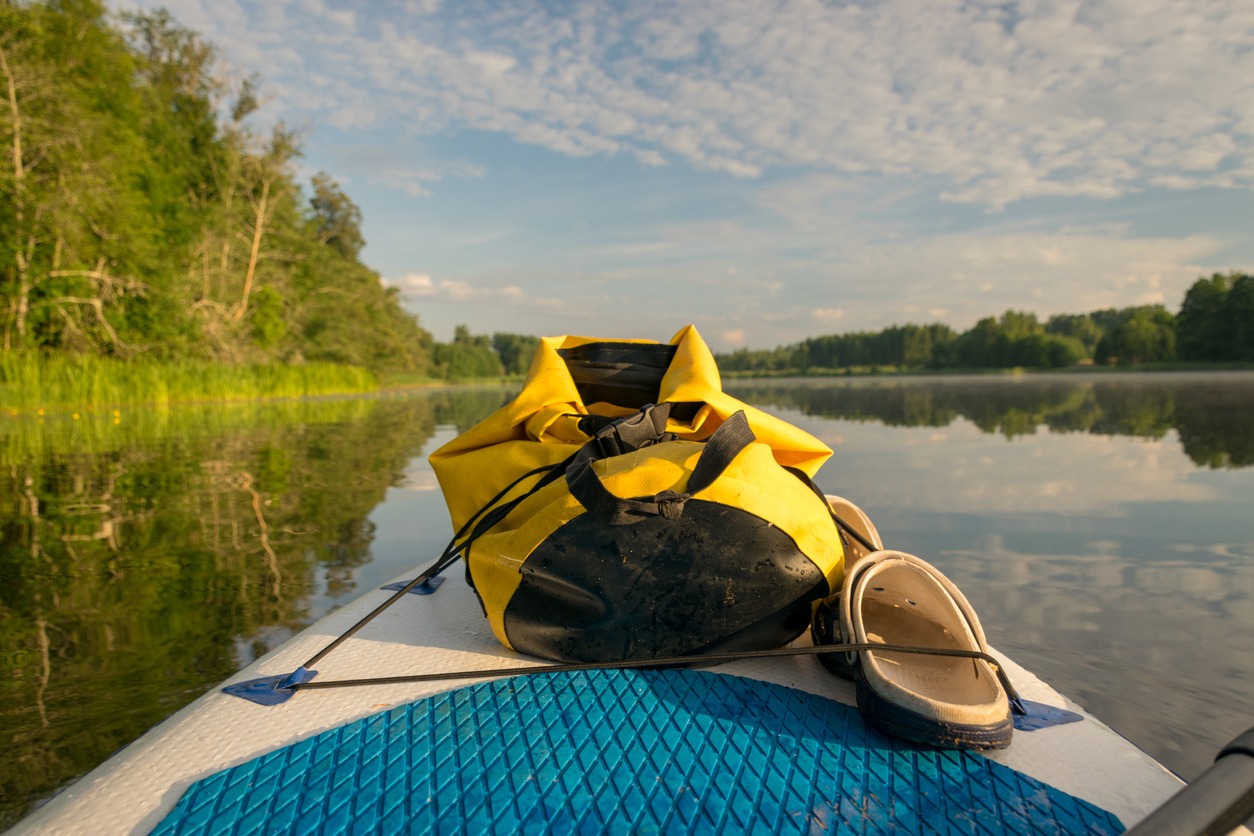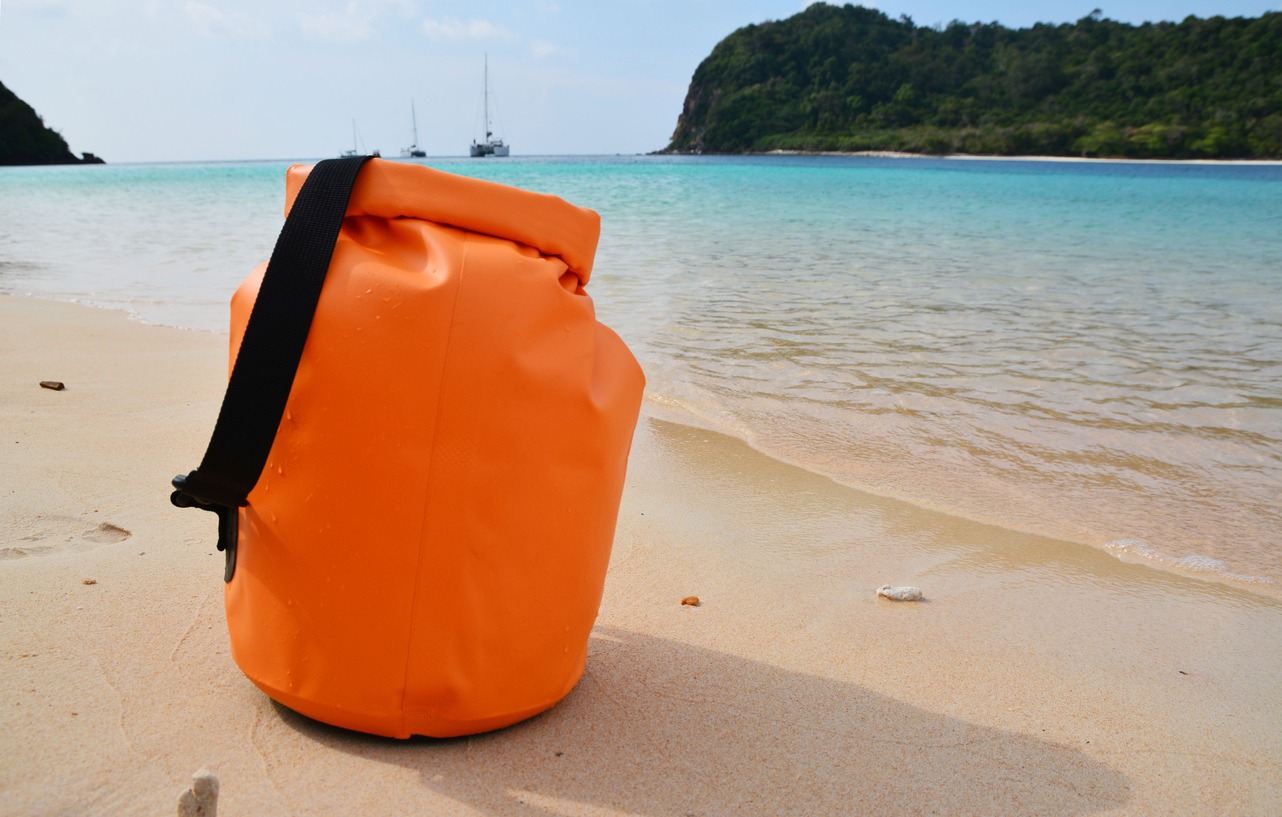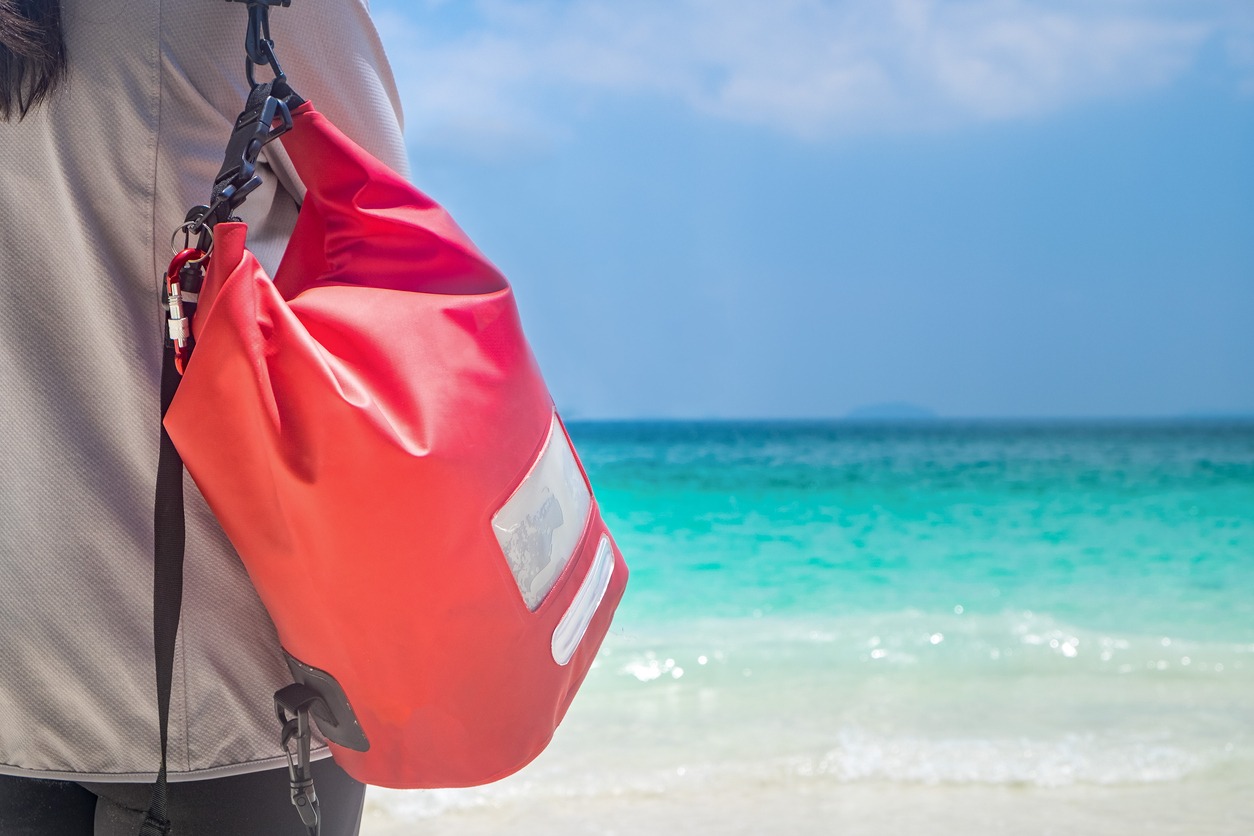There are only a few things more frustrating than going somewhere, and you are met with unexpected rain while on the way, soaking your bag and gear. This is why choosing a waterproof backpack can be beneficial. Waterproof backpacks are great for camping, hiking, and traveling.
However, finding the right waterproof backpack can be tricky. Some bags say they are waterproof, some are water-resistant, and you may need to learn what either term means or what you need. These are some tips that would help you in your search for a waterproof backpack:
Know the difference between waterproof and water-resistant.
Waterproof means water won’t get through the bag. It ensures that water stays out of the bag to protect your belongings. Meanwhile, water-resistant means the bag can hold up against water, but water may get through at some point.
The water resistance comes down to the material of the bag and how those materials are put together. If any part of the bag can let water in, then it’s no longer waterproof. However, it can still be pretty water-resistant. Let’s delve deeper into their differences:
Water-resistant bags
If you’re walking beside a body of water and happen to fall down with a water-resistant bag, more likely than not, your stuff will get wet and waterlogged.
However, it doesn’t mean that water-resistant bags have no purpose. If you happen to get caught in the rain, a water-resistant bag should be able to keep your belongings safe and dry. This is especially true if your bag comes with coated zippers, which keep all pockets and openings from getting soaked and full of water.
Waterproof bags
Manufacturers can waterproof almost any material that is used in the bag, including zippers. While water-resistant bags often have a protective coating on the fabric they use, waterproof bags have none because the fabric provides water protection. The zippers also come coated or covered to prevent gaps in the bag.
A waterproof bag doesn’t have gaps, and its fabric is airtight. If there’s even a slight gap, water can get in. This is why sailcloth has become a popular material among manufacturers of waterproof bag material. Sailcloth comes with several layers that can catch moisture and prevent it from getting inside the bag.
Manufacturers today rigorously test a bag before advertising it as waterproof. These bags are submerged in water to ensure no openings exist for water to get inside. They rely on ultrasonic soundwaves to melt fabrics in place to ensure no holes. To ensure waterproofness, manufacturers use thermoplastic welding to attach plastic parts to the bag.
Identify your needs
Once you have understood what waterproof and water-resistant mean, it’s time to assess what kind of bag you need.
When shopping for a waterproof backpack, here are the questions you may want to ask yourself:
What do I want to put in my bag? – Are there any special items I need to protect as I bring them with me (i.e., gadgets like laptops and cameras)? You may want a bag with special sleeves and compartments to protect these things.
How much storage space do I need? – The compartments and size of the bag will depend on this.
- How often will you use this bag? – If it’s going to be used for commuting and hiking daily, an expensive waterproof bag may not be worth it. You may get away with water-resistant bags.
- Why would you need a waterproof bag? – Most of the time, waterproof bags are not a need. If you do light traveling or even do a lot of outdoor adventuring and won’t risk getting caught in the rain much – there’s no need to get a waterproof bag. But if you want more protection, you may want to go waterproof. Waterproof bags are handy if you’re going somewhere with whitewater rapids, if you go to the beach often and you place your bag close to the ocean, or if you plan to go boating a lot and don’t want to risk your things getting ruined in case your boat sinks or topples over.
- Will this bag mainly be used by myself or shared with others? – If you are to share a waterproof bag (sharing is reasonable since waterproof bags are pricey and you probably won’t use it daily), make sure that you also get the input and preferences of the person you’re sharing it with. Also, if you plan to pack shared belongings in this bag (i.e., when rafting with a spouse), make sure it fits all that you need to bring.
Choose fabric material carefully
When shopping for a waterproof bag, you need to check what they are made of. Manufacturers generally use PVC (polyvinyl chloride) or TPU (thermoplastic polyurethane) to make the bags waterproof. If you want the most durable bag material, PVC is a good option. However, it releases harmful chemicals as it breaks down over time, so you should avoid this if you plan to use the backpack frequently.
In water-resistant bags, the fabric itself isn’t always water-resistant. Standard fabrics like cotton and nylon are woven closely with better production technology so that they would have very tiny pores in the weave. Still, no matter how tight the fabric is, woven fabrics have holes between batches of threads where water droplets can still seep through under the right condition.
To prevent this, most of the water-resistant bags come with a water-resistant coating applied in the manufacturing process. They use either polyurethane (PU), thermoplastic elastomers (TPE), or polyvinyl chloride (PVC). However, these materials are notorious for being washed away eventually. Each time you use your bag, the coating gets worn away, little by little.
Find the right size and shape
If you’re looking for a waterproof backpack, one of the main things to consider is its size. It must be able to keep all your belongings dry in case of rain or when your bag accidentally submerges into the water, so make sure it’s big enough to fit your essentials.
Inspect its construction
To be truly waterproof, every element of the bag needs actually to be waterproof. Not just the fabric – but also the zipper, the joints, and every material.
Having a waterproof material is essential, but connecting them as different pieces to make a bag is a completely different thing. Regular sewing won’t cut it, so manufacturers use a production technique called ultrasonic welding (RF welding), which is a high-end production technique.
In RF welding, two-panel edges of the material are carefully aligned and held together using pressure. At this point, the RF welding machine emits high levels of ultrasonic sound waves at the seams. The energy from the sound waves activates the material at a molecular level so that the molecules move around rapidly, resulting in heat that permanently bonds the two panels together. The result is two panels fused together, with a bonded area that is stronger than the original material.
RF welding machines are very expensive, and only highly trained technicians can use them. This makes the end result also expensive.
Zippers can also be designed to be waterproof. They may be tougher to pull than common zippers and need frequent maintenance and lubrication.
Check the compartments
Before buying a water-resistant backpack, it’s important to check the inside compartments to ensure it suits your needs. Various types of bags offer users a wide variety of storage compartments. Users have different preferences and needs, so consider yours before locking in on a bag.
In waterproof bags, expect some functional and aesthetic sacrifices. Though it doesn’t mean that waterproof bags are unattractive – they typically have far fewer compartments and pockets than a typical bag. The fewer access areas, the fewer ways the water can get in. This could mean one or two waterproof zippers and a roll-up top to cover the bag’s access point.
Check its waterproof rating
There are official waterproof ratings called Ingress Protection mark (IP), and it’s sometimes referred to as the International Protection mark. Certified waterproof items come with an IP rating – usually, a two-digit grading system applied to the enclosure of a mechanical or electrical item so that the customers can have a clear indication as to the level of protection it offers against intrusions like water and dust. It’s an attempt to standardize how “waterproof” a thing is because simply adding “waterproof” to a label can be vague.
Here’s what different IP ratings mean when it comes to waterproof bags:
IP65 – Foul weatherproof
An IP65 rating means that a bag can keep the rain out, and water will bead up and run off, but it’s not strictly submersible. These kinds of bags are made from lighter materials that are more pliable, making them ideal for packing inside more waterproof bags.
IP66 – Briefly submersible
An IP66-rated bag is 100% waterproof and can even be submerged in water for a brief period. The material these bags are made from is often thick tarpaulin, making them very hard-wearing. These bags can even be hauled on and off boats and over rocks. But to make sure no water enters the bag, its top has to be rolled down three or four times and secured with a buckle. If the bag is submerged briefly, there will be no trickle of water that can enter the bag, but there can be if the bag is underwater for longer. It’s worth noting that most bags of this rating will naturally float with their tops up out of the water.
IP68 – Submersible to 6 meters for 60 minutes
IP68 is the ultimate waterproofing rating you can get. These bags are 100% waterproof, even if the bag is submerged to a depth of 6 meters for 60 minutes. If you’re carrying valuables like a phone, it’s worth putting them in an IP68-rated case.
Make sure it’s durable and resistant to wear and tear
Waterproofing is essential if you need a bag to use in wet conditions. Inspect the material and gauge its durability. Ask the retailer about the waterproofing capabilities of the bag, and make sure it can withstand frequent exposure. This will help you decide if you need to get a waterproof liner.
Conclusion
Most individuals do not need waterproof bags for work and travel. For most people who want their belongings protected from sudden rain or snow, a water-resistant bag can be enough. Waterproof bags can be most beneficial to those who see prolonged downpours every day of their lives, for people purchasing a bag for a water-based activity, or for those who engage in extreme sports.




